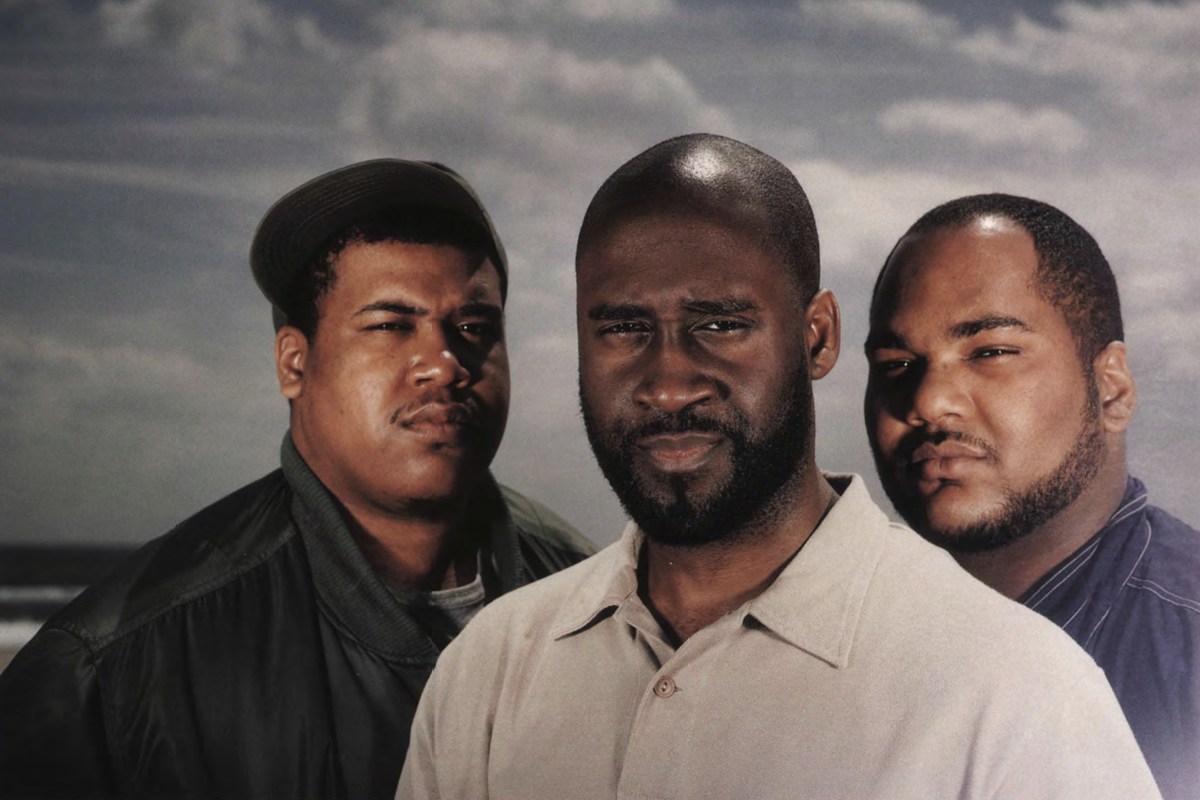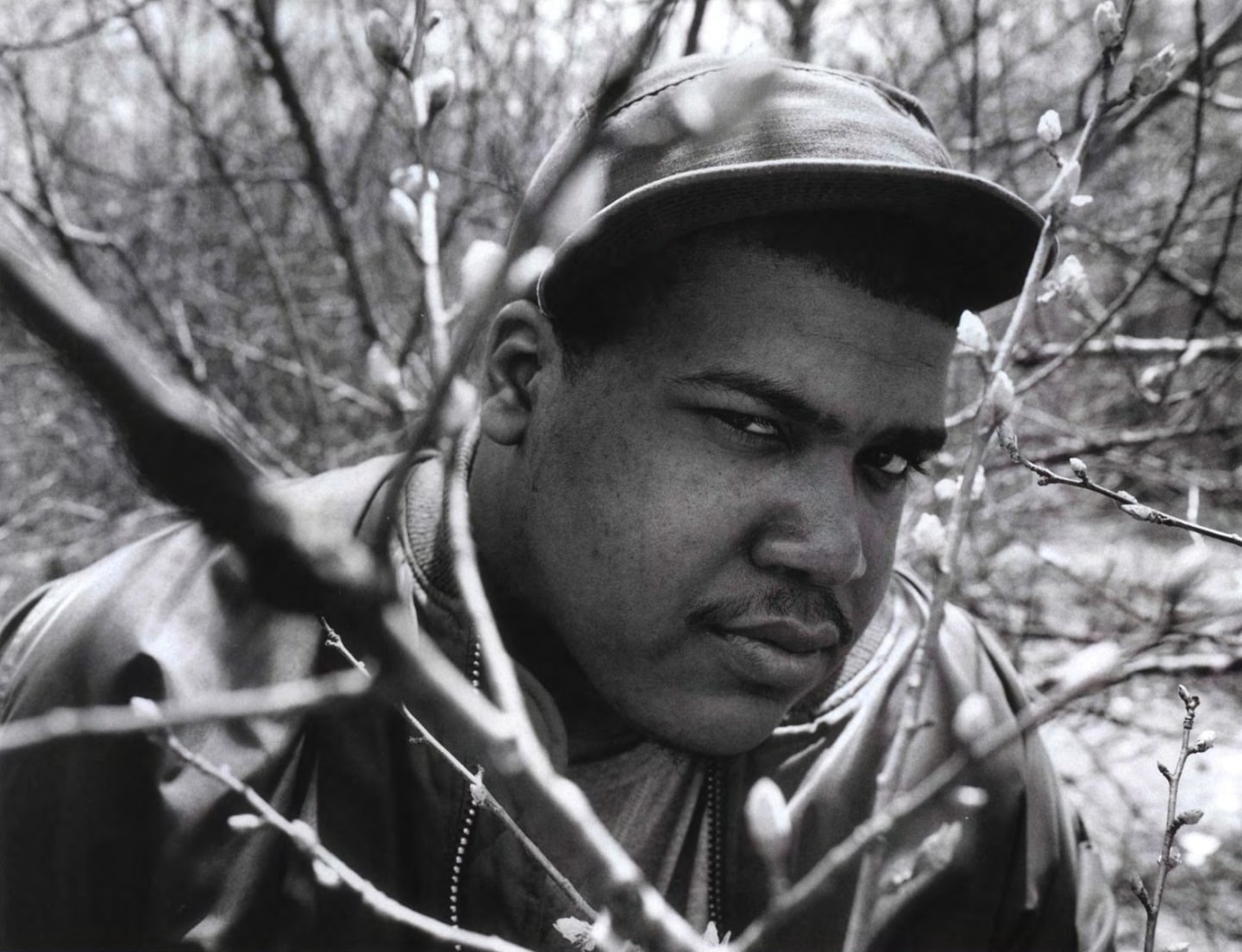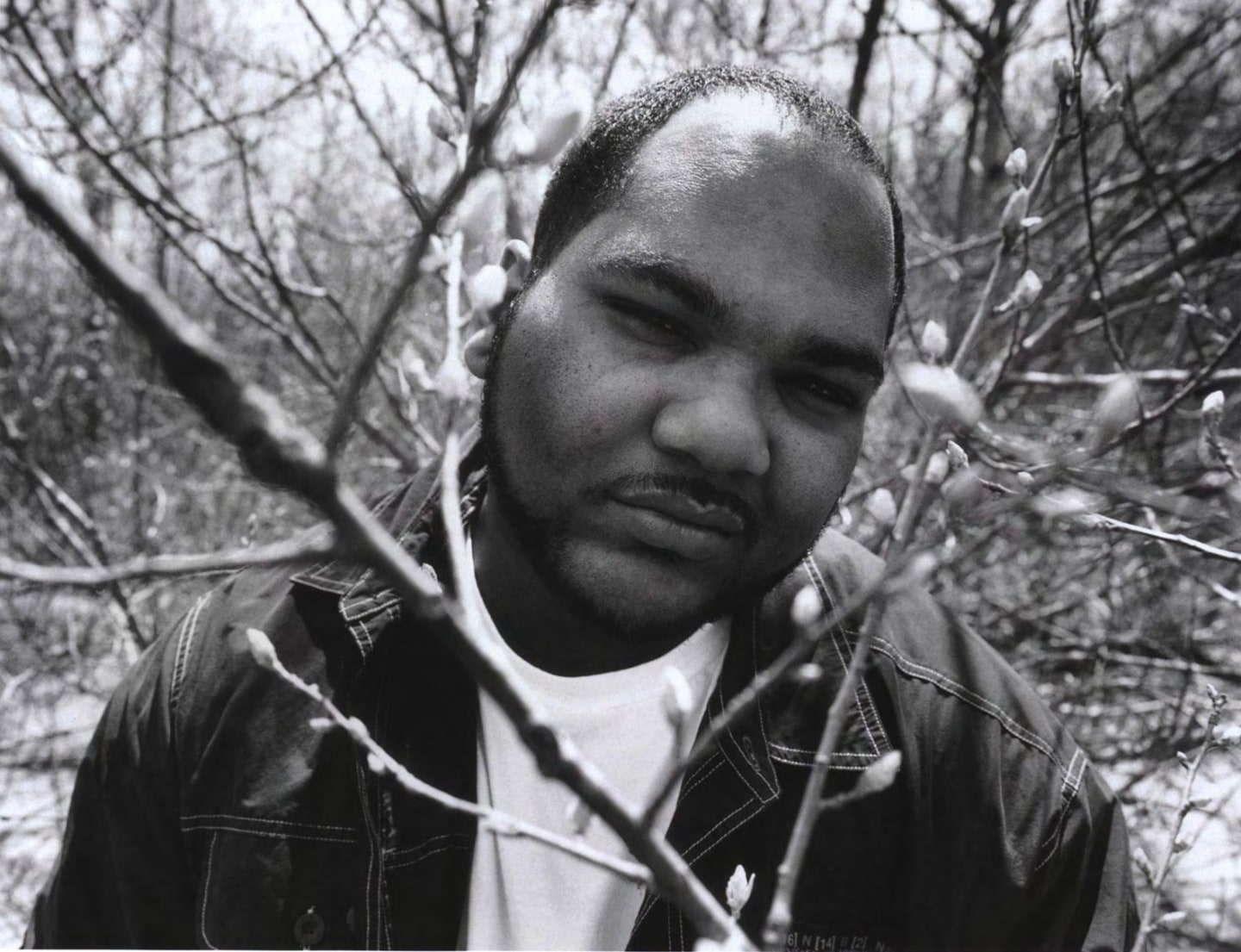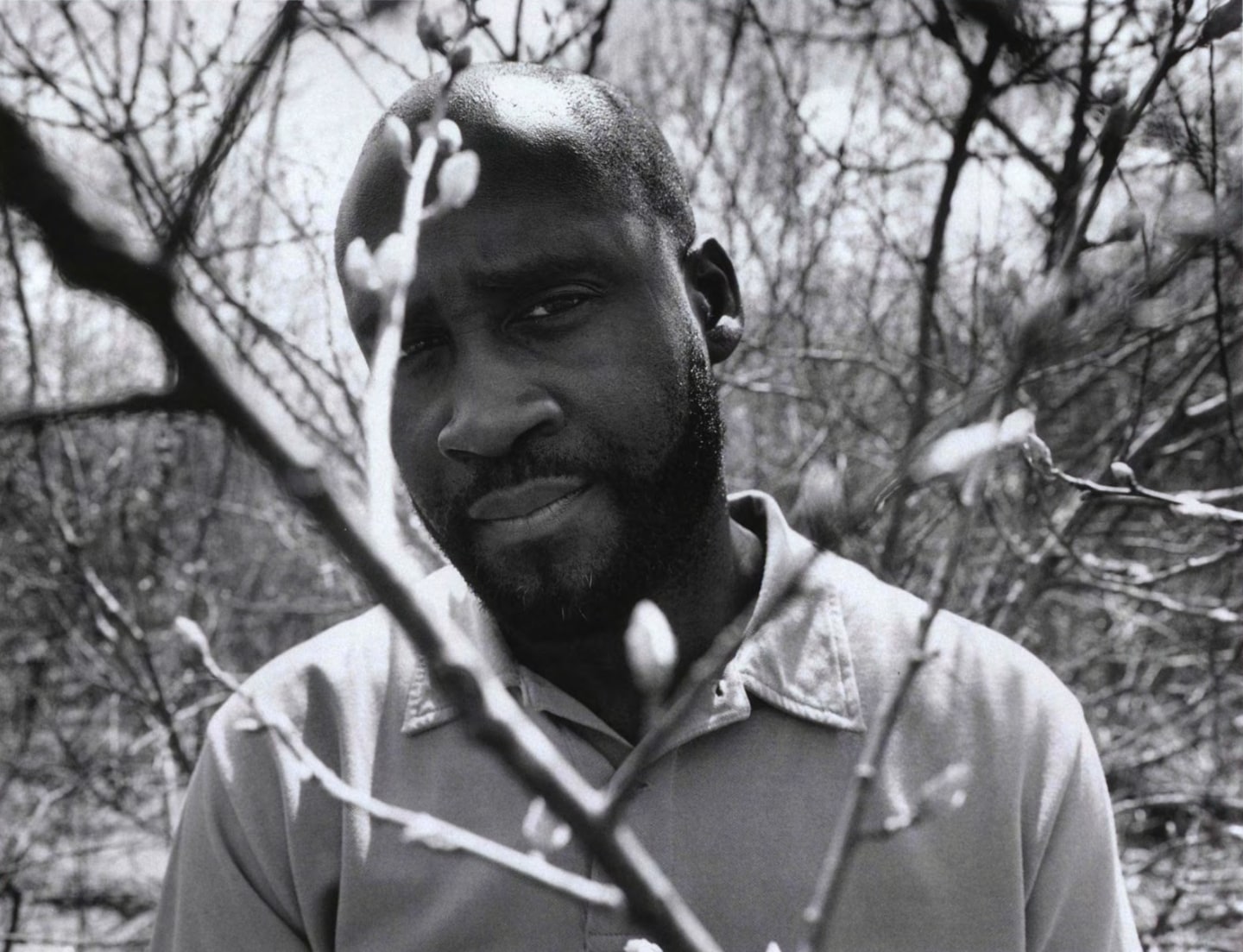
If there’s one theme that can be said to be a constant through De La Soul’s 11-year career, it’s the persistent desire to confound expectations: those of their fans, both new and old; those of their label, Tommy Boy; those of the press; those of their peers in the hip-hop industry; and maybe even those of the three members of De La Soul.
Their debut album, 3 Feet High and Rising, was a groundbreaking statement; its idiosyncratic and eclectic approach marked the first significant, substantive departure from the prevailing norm that hip-hop had encountered. The group, made up of three young men from Long Island — Kelvin Mercer (Posdnous), David Jude Joliceur (Trugoy the Dove) and Vincent Mason (Pasemaster Mase) — were not long out of high school when their whimsical demo, “Plug Tunin’,” fell into the hands of perhaps the only man in the hip-hop industry who could appreciate it: Prince Paul, the producer of the “hip-hop band” Stetsasonic. A kindred spirit, he used his influence to get the group signed to Tommy Boy records, and also produced 3 Feet High and Rising

It’s difficult now, 11 years later, to describe just how shockingly unconventional the album seemed back at the tail end of the ’80s. The cover art was bold, graphic, colorful, and seemed a million miles from the Dapper-Dan-suit-and-fat-rope gangster mise-en-scenes that prevailed at the time. And the music? Well, it was just so… so out there! For a start, there were the little dramatic interludes; non-sensical, comedic episodes that punctuated the tracks. Game shows, schoolyard bullies — I mean, who’d ever heard of that? And the tracks themselves; both musically and lyrically, they were completely unlike anything that had been heard before. Here was a group of MCs talking about “Potholes in My Lawn,” for chrissakes. Lawn? Who in hip-hop had — or would admit to having — a fucking lawn? Run DMC and LL Cool J had kept extremely quiet about their middle-class backgrounds while establishing their early careers, yet here were three suburbanites who seemed actually proud of their bucolic Long Island environment.
As unorthodox — to some heretical — as the album was, 3 Feet High and Rising was a tremendous hit for De La Soul. The album reached number 24 in the pop charts at a time when such an achievement was unheard of for a hip-hop act, and its biggest single, “Me, Myself and I,” was a top-40 hit (both the album and single went to number one in the R&B charts). The media perceived De La to be the “hippies” of hip-hop, a notion derived from the fact that they wore bright, tie-dyed clothes, substituted leather medallions for gold chains, incorporated a peace symbol into their cover art, and made repeated references to daisies throughout the album (DAISY was an acronym for Da Inner Sound Y’all). And their sound was widely held to be an “antidote” for the antisocial thuggery and non-inclusiveness of hardcore hip-hop. Indeed, the Village Voice, bastion of ’60s-era liberalism, declared 3 Feet High and Rising album of the year for 1989.
As encouraging as this might seem for a group launching a non-traditional album on an unsuspecting world, for De La Soul, it was anything but. Vindication, for them, soon came to seem like a cage, albeit one whose bars were gilded. Here were three intelligent, free-thinking young men who came out, as Joliceur first explained to me back in 1995, “influencing people to be more spiritual, to show their independence,” and all anyone cared about — noticed even — was the clothes. “DAISY just meant that what we made was from inside,” said Mercer to me in that 1995 interview. “But people tried to put this whole visual hold on us. People don’t even listen to the lyrics because the image… outweighs it.”
And it almost seems like that’s the point at which the smiles stopped. The carefree jollity of the debut was nixed from then on, and De La Soul settled into the routine that has become their trademark: release a record that seems designed to contradict and countermand everything that was on the previous one, and then fret over it. The second release was overt: De La Soul is Dead was the title, and the cover art depicted a drooping daisy in a cracked pot, about as literal a refutation of all they had been perceived to stand for as you could imagine. Its darker, more introspective tone met with mixed reviews and weak sales, And its 1993 follow-up, Buhloone Mindstate (to this day the group’s favorite album) did even worse.
By mid-decade, the group seemed to be rap’s perpetual misfits. The smiling, playful characters of 1989 were utterly transformed, and when I first met them in 1995, they all actually seemed depressed (there were rumors at the time that Mercer had suffered an emotional breakdown since the release of Mindstate). At the time, they were preparing to release their fourth record, appropriately entitled Stakes is High, and it is clear that they felt that the weight of the world was on their shoulders. “All this stuff about ‘keep it real,’” said Mercer in 1995. “For people our age, it’s just a cliché; it looks good on a shirt. But for younger kids… keeping it real means ‘Yo, if I hold a gun and I can shoot somebody, that means I’m brave and I don’t give a fuck about nobody,’ and that’s distorted. That’s not keeping it real, but that’s what is being taught.” De La, he explained, was all about being the antithesis to that. “[The group] has to do with bringing a message, and ain’t scared to stand behind what we saying,” he stated. In 1995, it seemed, De La Soul were a defiantly anti-commercial flag on the ramparts of hip-hop, ready to take on all-comers in their defense of hip-hop with integrity, with righteousness, of hip-hop with the good of their fellow man and woman foremost in its mind.
 David Jude Joliceur (Trugoy the Dove).
David Jude Joliceur (Trugoy the Dove).
Five years later, and De La Soul are on the verge of releasing the first installment of Art Official Intelligence, an album of three full-length records which will be released separately through the remainder of the year. Five years seems a perversely long time to follow up on a record that De La consider something of a triumph. However, “we never took it on ourselves to rush to come out,” states Mercer. “It’s not even like we’d be like, ‘Yo, we’re taking too long.’ We always thought that from where we stood, when you make an album, you go out and support it — you go out, you tour, you let the whole world know about it.” And there’s another factor, as Joliceur explains: “We’re not selling two, three million records, and we have to put food on the table, so taking [time] out to tour is important. We take time out not because of being tired of the business, but to handle our business.”
Interesting that Joliceur mentions business, for in the “cycle” since their last album, the world in which De La Soul finds itself has changed immensely. Hip-hop in 2000 is a different animal from hip-hop in 1995. Since Stakes is High (released in ’96) came out, the music has moved from the periphery of the recording industry into its very mainstream. Hip-hop artists like Jay-Z and DMX now expect — and are expected — to sell in the kind of numbers that previously only pop mainstays could achieve. And that phenomenon has posed a dichotomy between hip-hop’s self-proclaimed independent underground — artists who, in many cases, had their first significant on-record exposure through their guest-spots on De La albums — and its multi-platinum mainstream. In fact, it can be said that the music which has achieved that mainstream success is, to a large extent, based on exactly the kind of narrow-minded, negative imagery to which De La Soul always stood in such adamant opposition. So you can imagine the surprise at hearing the line, “If you a fat chick getting your fuck on tonight say ooh, ooh, oo-ooh,” on a De La record. Surprise turns to amazement at the discovery that it’s Redman, guesting with De La Soul. So you can imagine the surprise at hearing the line, If you a fat chick getting you’re fuck on tonight say ooh, ooh, oo-ooh, on a De La record. Surprise turns to amazement at the discovery that it’s Redman, guesting with De La Soul, delivering the line. Amazement becomes outright disbelief that despite the fact that Redman says it, it’s actually Joliceur who penned it.
But there it is: Redman, Busta Rhymes, Rocwilder, Xzibit with Tha Alkaholiks, the Beastie Boys and — yes yes, y’all — some rank misogyny are among the many guests on De La Soul’s fifth album. Wow!
 Vincent Mason (Pasemaster Mase).
Vincent Mason (Pasemaster Mase).
So what happened? Did De La Soul decide that in the end the battle wasn’t worth it? That perpetual opposition to hip-hop’s mainstream was just too damn difficult, and that it was time to get paid? That one of the last actual groups in this music — a self-contained unit of MCs and producers who always steered clear of the collaboration frenzy that marks current hip-hop — just decided to say “fuck it” and go with the flow? These are questions that are bound to be asked.
To Mercer, the answer is simple: “We always just try to make good music,” he explains. “We always take the time to analyze everything that we’re doing, but I think looking at it, even we’ve realized, ‘Wow, we’ve never had this many features on an album all at once.’ But you know what? The music is blazing, and the songs with us by ourselves match them. It’s not like — and I’m really happy I’m saying it — we’re sitting here and we can do an interview and we can go, ‘Yeah, we got Redman, we got Busta, we got all these people on the album.’ A lot of people do that and the songs be OK. These songs are blazing, and if these artists weren’t on them, they’d still be.”
Joliceur expands: “There’s terminology that you have to implement in your music just so the younger kids can dig where you’re coming from. It’s just like when pops comes around his sons and his kids, he has to adapt in order to fit into the circle and for people to have respect for him. I think somehow that’s how we look at the rap game. We try to approach the listeners, especially the young listeners, with the same vibe they would give to us. We’re not gonna try to become them or mimic them; we’re gonna let them know where we’re coming from, but at the same time, implement some of the things that’s gonna let us communicate with them.”
Certainly, communication has always been a key issue for De La Soul. Their constant self-reinvention was mostly driven by an earnest attempt to prevent people’s preconceptions from hampering their ability to connect with the listeners. Just as De La Soul is Dead sought to kill off the hippie stereotypes, Stakes is High was a deliberate attempt to reign in their lyrical flights of fancy in order that their very considered message be heard and understood. Even then, it was pops coming around his kids and doing his very best to kick it with them, and five years later, with so much showed, so much proved, perhaps it’s even more so.
For with Art Official Intelligence, De La Soul have, for the first time in their career, no explicit agenda other than to make dope music. Perhaps for the first time in an 11-year history, they don’t feel any urge to challenge the norm, to state an opposition to the current trend, to hammer theses to church doors.
“It’s no set theme,” says Joliceur. “It’s just giving us the opportunity to wild out, bug out, have fun; to be able to record with people we’ve respected — from the Redmans, the Bustas, the Gang Starrs, all the different peoples that’s involved in the album. We appreciate good music, and there’s no one that’s going to come in and write Pos’ lyrics, or write Dave’s lyric’s or write Mase’s lyrics, but we appreciate music, and to know that a person like Jaydee or Rocwilder or Scratch or Pete Rock or whoever it is can create something that I would never think of. If I can be a part of that then definitely! I’m not going to pass that up. It’s just us flexing our creative muscles, man, and it feels good.”
 Kelvin Mercer (Posdnous).
Kelvin Mercer (Posdnous).
So here are three men, each in his 30s, with children, commitments, responsibilities, pressures, who have decided, after 11 long, often hard years in an industry to which they have frequently found themselves in opposition, to just kick back and do what feels good, and to hell with the contrariness. After years of confounding everybody else’s expectations of what they’re supposed to be, they’ve finally gone against their own, and it’s almost like a rebirth. Posdnous, Trugoy the Dove, and Pasemaster Mase — De La Soul— is finally, truly dead. Long live De La Soul.